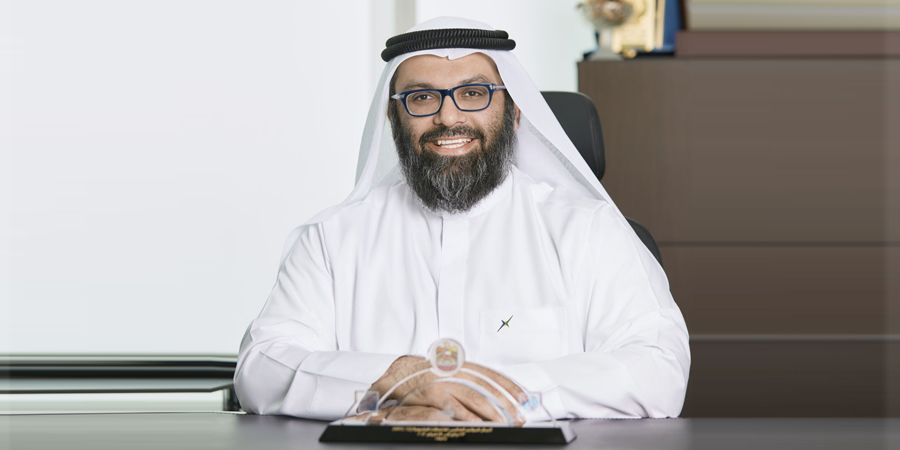The United Arab Emirates (UAE) is considered one of the most advanced countries in the field of telecommunications and the adoption of modern technologies. In line with this, its national government undertakes the task of evaluating the need to appropriately allocate and enforce specific radio spectrum uses.
The Telecommunications and Digital Government Regulatory Authority (TDRA) in particular houses the Spectrum Management Affairs department which is responsible for monitoring, planning & allocation, and services. To understand better the role and importance of radio spectrum not only in the UAE and MENA region but globally, Telecom Review spoke with Tariq Al Awadhi, chairman of Arab Spectrum Management Group (ASMG) and the executive director of Spectrum Management Affairs at TDRA.
Radio spectrum is the cornerstone of wireless connectivity. What are the efforts/approaches being done by ASMG and TDRA to address the spectrum needs and encourage fair spectrum usage in the Arab community?
Spectrum scarcity is relative to the frequency ranges due to radio wave propagation. It is the UHF (300 MHz to 3 GHz) and now SHF (3 to 30 GHz) frequency ranges that are subject to competing requirements. The challenge is to encourage new use while protecting the existing use. TDRA and ASMG have been leading efforts to encourage the introduction of wireless broadband at a minimal cost. The radio frequencies below 1 GHz offer excellent coverage for the air interfaces of IMT. ASMG was the leader in proposing the 700 MHz band identification for IMT at WRC-12. Then for 5G, due to ecosystem, ASMG again took lead in identifying the 3.4 GHz band for 5G use even before the WRC-19.
With 5G, IoT, satellite innovation, and increased smart use cases, creating sufficient spectrum capacity is a must. How can harmonization, coverage, and cost-efficiency be achieved with all these targets in mind?
5G is the core platform to offer IoT, smart city applications, and hybrid satellite and terrestrial systems. 5G use cases can adequately meet the connectivity needs of very low data for IoT to very high data needs for video surveillance in smart cities. Harmonization is the key for economies of scale. 5G harmonization has been driven by chipset availability and that is why ASMG’s decision to allow 3.4 GHz was the key enabler to have the maximum 5G launches by some Arab Countries with UAE leading the 5G deployment.
What is being done within your particular organizations in preparation for WRC-23? Which part of the WRC-23 agenda and discussions would impact the MENA region the most?
All the WRC-23 agenda items are important and invite studies on issues that need global consensus and changes to radio regulations. The first five agenda items are related to mobile services and have the most active discussions and it will remain the prime focus during the WRC-23. These agenda items have diverse support depending upon the uptake of existing services and need for mobile in these frequency ranges. TDRA is also engaged in the ITU-R WP5D and TG6/1 and actively engaging the technical and regulatory discussions.
UAE has a global leadership position within the ICT sector. What is the major contribution of the spectrum — as an enabler and an innovation catalyst for industries — to the fast digitalization in the country?
UAE has a future foresight plan. TDRA has issued the UAE Spectrum Outlook for the period 2021-2025 and the UAE strategy for 5G and beyond for the period 2021-2025. Both of these plans show that radio spectrum is one of the key enablers for the digital economy of the UAE including Industry Revolution 4.0, smart cities, digital lifestyle, digital services, etc.
In a long-term perspective, how can proper spectrum allocation as well as efficient and effective spectrum management globally improve digital inclusion?
Spectrum use has considerable social importance from the point of view of a state's obligations to protect the basic rights of its citizens. That is why the telecom law of each country sets the framework for spectrum management at the global level along with the ITU-Radio regulations which have a treaty level status. Digital Inclusion refers to the activities necessary to ensure that all individuals and communities, including the most disadvantaged, have access to and use of information and communication technologies (ICTs). The most economical way to offer connectivity is through a mobile phone. The global smartphone penetration rate is estimated to have reached 78.05% in 2020. This is based on an estimated 6.055 billion smartphone subscriptions worldwide and a global population of 7.8 billion (Source: Statista.com). According to GSMA, 51% of the global population has internet connectivity through a mobile phone and this percentage will continue to increase. UHF spectrum allocation for IMT will enable a more affordable network rollout in countries with large geographical areas and the ability to reach pockets of the population in rural areas.










